Introduction
The dynamic landscape of pharmaceutical manufacturing surely requires navigating regulatory compliance as a critical factor for success. This comprehensive guide sheds light on the intricacies of most regulatory compliance and how it impacts the industry. Whether a seasoned professional or a newcomer, understanding and mastering this aspect can either make or break a venture.
The Secret of Mastering Regulatory Compliance in Pharmaceutical Manufacturing: A Guide for Success
The Regulatory Maze Unveiled
The pharmaceutical industry is governed by a web of intricate regulations and standards set forth by various agencies and bodies. The Food and Drug Administration (FDA) in the United States, the European Medicines Agency (EMA) in Europe, and other national regulatory authorities play pivotal roles in setting and enforcing compliance standards.
The FDA, for instance, employs a stringent regulatory framework to ensure that pharmaceutical products are safe, effective, and meet the necessary quality standards. This involves rigorous evaluations of manufacturing processes, product testing, and adherence to Good Manufacturing Practices (GMP).
Staying Ahead: Current Trends and Changes
In an industry characterized by rapid advancements in technology and evolving scientific knowledge, keeping abreast of regulatory changes is paramount. Regulatory bodies continuously adapt their guidelines to reflect new discoveries, emerging technologies, and shifting public health priorities.
Staying informed about these changes is more than a compliance necessity—it can give your venture a competitive edge. Companies that proactively incorporate the latest compliance standards often find themselves better positioned to innovate and adapt to market demands.
Building a Compliance-Centric Culture
Ensuring compliance isn’t just a box to check—it’s a cultural commitment that starts from the top. Company leaders must instill a mindset of compliance throughout the organization. This begins with setting clear expectations, providing ongoing training, and creating an environment that encourages open communication about compliance issues.
Investing in employee education and development is crucial. Well-informed and empowered employees are more likely to understand the importance of compliance and its impact on product quality and public safety.
Documentation: The Backbone of Compliance
Accurate and thorough documentation is the cornerstone of regulatory compliance. This includes records related to product development, manufacturing processes, quality control measures, and adverse event reporting. Detailed documentation not only satisfies regulatory requirements but also serves as a valuable resource for process improvement and troubleshooting.
Implementing a robust document management system is essential. It should facilitate easy retrieval, secure storage, and controlled access to critical compliance-related documents.
Quality Assurance: A Non-Negotiable Priority
Quality Assurance (QA) is a fundamental aspect of compliance. It encompasses the processes and systems that ensure products meet predefined quality standards. This involves comprehensive testing, inspections, and audits to verify that every batch of pharmaceuticals leaving the facility is safe, effective, and consistent.
A well-structured QA program is designed to prevent deviations from established quality parameters, minimizing the risk of non-compliance and product recalls. It’s a proactive approach that safeguards both public health and the reputation of your venture.
Risk Management and Contingency Planning
Compliance risks are inherent in any pharmaceutical operation. These risks can range from supply chain disruptions to manufacturing process deviations. Identifying potential risks and implementing robust contingency plans is crucial for maintaining compliance.
A thorough risk assessment should encompass all aspects of the manufacturing process, from raw material procurement to distribution. By proactively addressing potential challenges, you can minimize their impact on compliance and maintain a steady supply of quality pharmaceuticals.
Tech Solutions
In the digital age, technology is a powerful ally in compliance efforts. Manufacturing Execution Systems (MES), Electronic Batch Records (EBR), and Quality Management Systems (QMS) are just a few examples of tools that streamline compliance processes.
Case studies highlighting successful technology implementations can provide valuable insights for integrating these solutions into your own operations. The right technology not only enhances compliance but also improves operational efficiency and data accuracy.
Collaboration and Networking in Compliance
Compliance isn’t a solitary endeavor—it’s a collaborative effort that extends beyond the confines of your organization. Engaging with industry peers, participating in industry associations, and maintaining open lines of communication with regulatory bodies can yield significant benefits.
Collaboration provides opportunities to share best practices, learn from others’ experiences, and stay informed about emerging compliance trends. It also fosters a sense of collective responsibility for upholding industry standards, ultimately benefiting public health and safety.
Parting Thoughts
Mastering regulatory compliance in pharmaceutical manufacturing is a multifaceted endeavor. By adopting a proactive, informed approach, your venture can not only meet industry standards but also thrive in an ever-evolving landscape. Remember, compliance isn’t a one-time achievement—it’s an ongoing commitment to quality, safety, and innovation. However, with the right strategies and a dedicated team, pharmaceutical ventures can surely navigate the regulatory maze with a complete sense of integrity.






